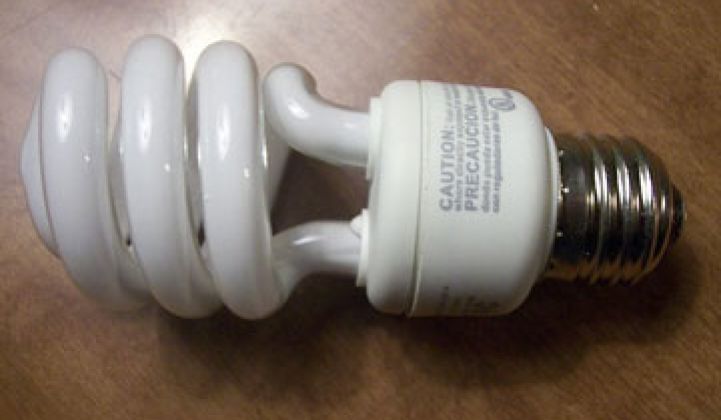Americans, thousands of which are still suffering in the dark two weeks after Hurricane Sandy, are painfully aware of how much they rely on electricity – once it goes out.
But for the rest of the year, Americans are still painfully unaware of what drives their home energy bills or what it takes to cut it, according to the eighth annual Energy Pulse survey by Shelton Group, a marketing firm that focuses on the energy efficiency space.
Home energy continues to rise, mostly due to more gadgets and bigger homes, even though appliance efficiencies have improved significantly in recent years. Eighty percent of Americans think they’re using less energy or the same than they used to.
Up until 2009, that was pretty much true. More efficient appliances offset increasing number of gadgets, and newer homes also use less energy. But increasingly hot summers have pushed up energy use – and therefor energy bills – in more recent years.
When it comes to increased bills, consumers seemed to have no idea whether that was from higher utility charges or using more energy. Increasing access to energy information, something championed by the White House and becoming more available with initiatives such as Green Button, could lessen this information gap.
And while everyone complains about increasing energy bills, the study of more than 1,000 people suggested there is actually a high threshold for price hikes. The average person said the bill would have to go up about $10 per month, or $120 per year, before he would spend money on energy-efficient retrofits.
Logic ended there however. When it came to significant retrofits, such as spending $4,000, people said they would need to save nearly $140 per month, which would be an 85 percent reduction of the average utility bill.
But there is a silver lining. Homeowners responded that more than half prioritized making their home more efficient over more comfortable or more beautiful. In reality, however, that doesn’t pan out. The good news is that energy efficiency can often come as part of the comfort package, whether it’s home security or home automation.
Although many Americans don’t really know what saves significant energy and what doesn’t (the Shelton survey echoed other studies where people say they unplug their rechargeable electronics – yet most cellphones and computers made in the past few years do not use a lot of energy on standby), there is more good news from the survey. As Energy Star appliances become a larger swath of what’s in the store, they have increasingly become what people are buying. High-efficiency heating and cooling have particularly grown in popularity.
That is where the good news ends.
“We know that self-control is a finite resource, and many people are simply tired of being vigilant. We also know that it’s difficult to see the finish line when it comes to home energy efficiency and conservation,” the study states. “It takes multiple updates, renovations and behavior changes to see marked improvement in home energy consumption (to say nothing of noticeable bill reductions), and many folks give up before they’ve done enough to reap the rewards.”
The survey echoes the calls of the American Council for an Energy-Efficient Economy and calls for more systematic approaches to energy retrofits. For homeowners, they suggest tiered incentives so that customers can actually make enough improvements to see real savings. For instance, this survey always finds people prioritizing new windows to save energy, even though more efficient weather stripping and insulation can be far more cost effective.
For utilities, working with a range of third-party companies that can walk customers through the cost-benefit ratio of different upgrades is a critical place to start. If utilities don’t, others – like big box stores – will fill that space in coming years. Another study found that nearly two-thirds of residents are unaware of utility rebate programs.
Installing solar, which is one of the ways that people can see a significant drop in utility bills, saw a significant jump in interest from just one year ago – up 8 points to 32 percent.
Short of putting solar PV on the rooftop, however, there are technologies – both simple and more complex – that can reap serious savings. Some of the newest Energy Star hot water heaters on the market can save two-thirds of the energy of a standard, new electric water heater.
The United Kingdom has opened up hundreds of millions of dollars for on-bill financing through its Green Deal, which will mostly go to low-cost retrofits like insulation.
Even with all the insulation in the world, there will continue to be an onslaught of one more cable box (a surprising energy hog), another iPad or an additional laptop in the house.
A combination of energy efficiency, aggressive energy standards for new products and some good, old-fashioned turning off the lights will be the only way forward in the future. It will all have to come with a healthy dose of automation and embedded intelligence to turn itself off when we forget to – which we will – even if we know the cost of every plug load in the house.



